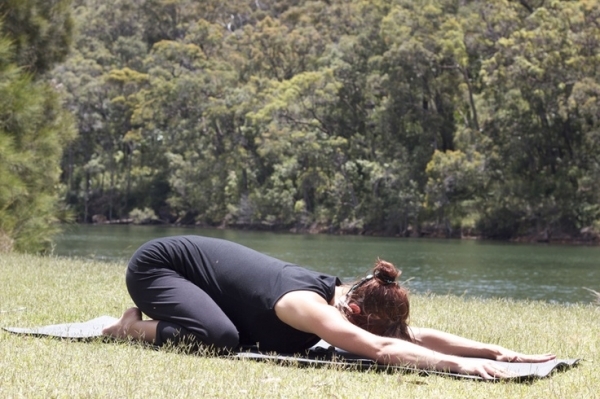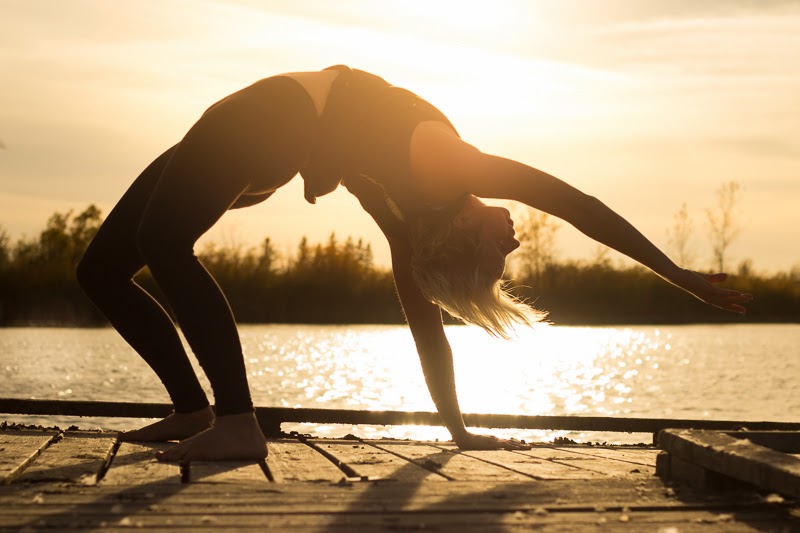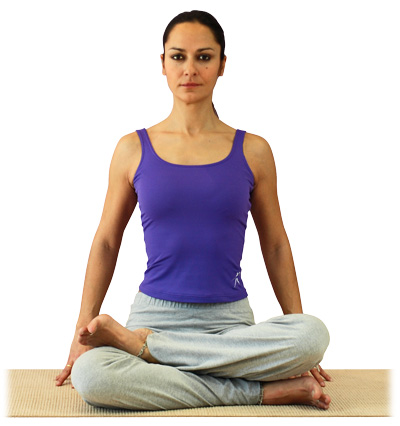Today’s yoga culture heavily focuses on the physical practice of yoga, but it is important to know that the asanas are only a small piece of the yoga journey. The other seven limbs of Patanjali’s eight-limbed yoga system receive much less attention in a studio setting and in the Western culture overall.
The Niyamas of yoga are the second limb of Patanjali’s eight-limbed yoga system and relate to personal observance. They’re strictly an internal practice, but if you’re already familiar with the physical practice of yoga, these five poses can also help you learn the Niyamas and gain a deeper, more internal practice.
As you connect movements with the Niyamas, you will help improve your quality of life and that of those around you while maintaining a positive and healthy environment.
Here are five poses that can you connect with the Niyamas of yoga.
Bitilasana (Cow) with Lion’s Breath
Come to all fours. On the inhale, come into Marjaiasana (Cat) pose by rounding up through the spine and pushing the mat away, feeling a nice stretch in your upper back. On the exhale, come into Bitilasana (Cow) pose by dropping the belly down and lifting the heart and the gaze. Feel a nice stretch in the lower back.
Follow through the Marjaiasana and Bitilasana poses a few times, and on each Bitilasana pose, exhale with a deep, cleansing lion’s breath by opening your mouth and sticking your tongue out toward your chin. Make a “ha” sound with every exhale.
Say to your inner self: “I treat my body like a temple, and my mind is pure.” This relates to the first Niyama, Shaucha.
Bitilasana (Cow) with Lion’s Breath
From all fours, bring the knees to the edges of the mat and the big toes together. Sink the hips back to the heels and reach the arms forward, palms facing down. Rest your third eye/forehead on the mat and relax the shoulders.
Say to your inner self, “I am content with my past, present, and future. I am humble.”
This relates to the second Niyama, Samtosha.
Camatkarasana (Wild Thing)
From Adho Mukha Savasana (downward-facing dog), bring your weight into your right hand and roll to the outer edge of your right foot, coming into Vasisthasana (side plank pose).
Lift your hips high, keeping the right arm strong. Step your left leg back, keeping the leg slightly bent. Open the heart a little more as you sweep the left arm up and over. Keep lifting up with the chest, moving into a deeper backbend as your right foot becomes solid on the ground. Try to relax the neck.
Say to your inner self, “I am committed to my practice and being attentive to my body, breath, heart, and mind.”
This relates to the third Niyama, Tapas.
Agnistambhasana (Firelog)
From a seated position, place the left foot or ankle on top of the right knee and gently move the right foot until it is directly below the left knee. If this is unavailable to you, you can place a block under your left knee for added support.
Let the hands fall to the knees. When you feel comfortable in the hips, inhale to lengthen the torso. If it’s available to you, on the exhale, slowly start to hinge forward, walking the fingertips forward and relaxing through the neck.
Say to yourself, “I am a spiritual being and am my own teacher.”
This relates to the fourth Niyama, Svadhyaya.
Savasana (Corpse Pose)
Lie down on your back on your mat. Let the feet fall to the edges of the mat. Place the hands either on your belly, palms facing down, or down by you side, palms facing up. Relax all the muscles in your body and slow down the breath. Breath deep from the belly. Close the eyes.
Say to yourself, “I let go of my ego and surrender myself to the divine, and the reason for my being will become clear.”
This relates to the fifth Niyama, Ishvara Pranidhana.





